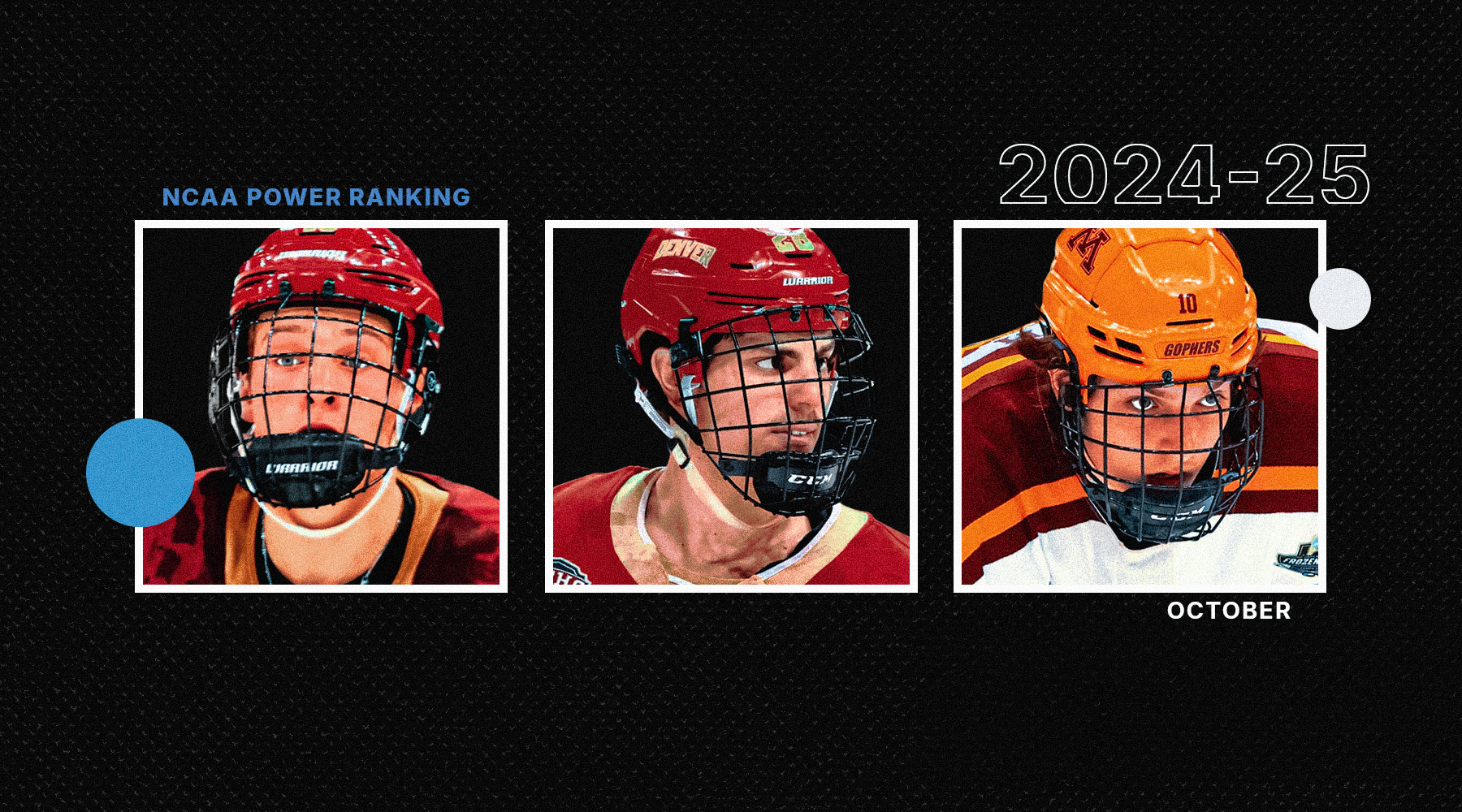The ECAC is off to its best start in years
This article is presented by Everything College Hockey.
This past weekend, teams in the ECAC went 5-3-0 in non-conference action. That may not sound like anything special, but for this conference, it is.
That 5-3-0 weekend comes after a three-week stretch in which ECAC teams went 15-12-2. They closed the opening month of the season five games above .500, and in recent years, that level of non-conference success has been hard to come by.
The ECAC hasn’t had a .500-or-better season in non-conference play since 2015-16 (62-42-10), and winning these games is key to getting multiple teams into the NCAA tournament at the end of the year. In short, the more you win in non-league games, the better your quality of competition rating becomes when playing against conference rivals. That, in turn, means losses tend to hurt your Pairwise ranking less, and wins help you more.
The national tournament expanded to 16 teams in 2003, and in the two-plus decades since, the ECAC regularly put three and sometimes even four teams into the tournament, including every season from 2013 to 2019. However, since the start of the 2020s, that’s only happened once — in 2023, when four teams made it — partly because they achieved a .496 non-conference winning percentage and a dark-horse Colgate team won the conference tournament after a sixth-place finish to snag an autobid.
Part of the problem in recent years is that the ECAC often plays Hockey East teams in non-conference games, and the latter is typically the better league in most seasons. Getting four Hockey East teams into the national tournament is usually expected, and anything less is often seen as a down year. As such, the ECAC has not fared well against Hockey East, with a 44-85-15 record from 2022 to 2024. So far, they’ve only played Hockey East teams 10 times (2-8-0) and will add another 32 to the slate before the season is over. That, perhaps, doesn’t suggest good things ahead.
However, the ECAC seems to have adopted a winning formula that the NCHC figured out long ago: If you want to qualify as many teams as possible for the NCAA tournament, the most important thing to do is to schedule the best possible teams you’re reasonably confident you can beat. Even if you’re playing many Atlantic Hockey and independent teams, every win pushes your conference winning percentage up; the better your opponent, the more those individual wins boost your tournament chances. Still, it’s generally better to win against the weakest opponent possible than to lose to the strongest one.
In all, the ECAC still has almost 70 non-conference games on the schedule, but they’ve already played 17 against Atlantic Hockey opponents, and that number will rise to 31 or 32, depending on the results of an upcoming holiday tournament. Either way, that’s the most games the conference has played against Atlantic Hockey in more than a decade. If the current winning percentage (.824) holds up, that will add another 11 or 12 wins to the conference’s total.
Of course, not all teams in a conference are of equal quality, but it must be noted that the ECAC pre-season favourite hasn’t even played a game yet. Cornell, like the other Ivy League schools, doesn’t start play until this coming Friday. Harvard and Dartmouth, two other teams expected to contend for home ice in the conference playoffs, are also likely to win more than they lose out of conference. Those teams have mostly set themselves up for more challenging OOC competition; Harvard has seven such games against Hockey East teams and one against the Big Ten, while Dartmouth has five HE opponents and a couple of independents. Cornell, for its part, opens this Friday hosting North Dakota. The hope, obviously, is that they can bring the collective winning percentage against these top conferences up a bit, as every little bit helps.
The challenge, if you will, is that other top conferences in the country still have higher OOC winning percentages to this point, largely because Atlantic Hockey (.279) and the independents are underperforming (.242). Last season, the independents were buoyed by Arizona State winning 12 games against conference teams, but now the Sun Devils are in the NCHC. Even with some impressive wins — Lindenwood taking four points at Wisconsin, Alaska and Long Island both beating Notre Dame, Stonehill beating Merrimack — they’re likely to be deep underwater by season’s end.
But the other thing to say about the ECAC this season is that Union (4-1-0, with the only loss at Boston University) and Clarkson (5-2-0, with losses to RIT and Notre Dame) are really leading in non-conference play. Relatively soft schedules? At the end of the season, it might look that way, but again, no points are docked for beating opponents of any quality, let alone outscoring them a combined 47-33.
There’s even more reason to believe the conference can keep up this winning stretch: in addition to Cornell, Dartmouth, and Harvard about to start their schedules, mighty Quinnipiac is actually below .500 right now, at 2-3-0. Their losses are to Maine and UNH, who have one loss combined so far this season (6-1-2), and that loss was UNH’s 3-2 defeat at Quinnipiac last Saturday.
So while there’s a lot more Hockey East on the horizon for the ECAC, the conference has won enough games so far to set itself up for serious NCAA consideration by year’s end. And with how college hockey has changed in recent years, we might be heading back to the days when three or more ECAC teams making the tournament is the norm.



